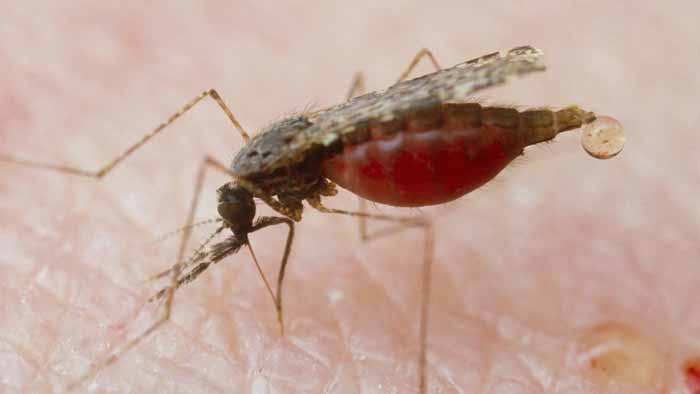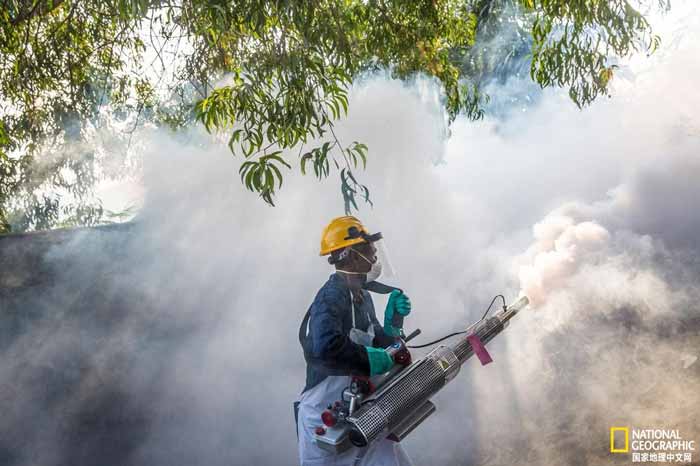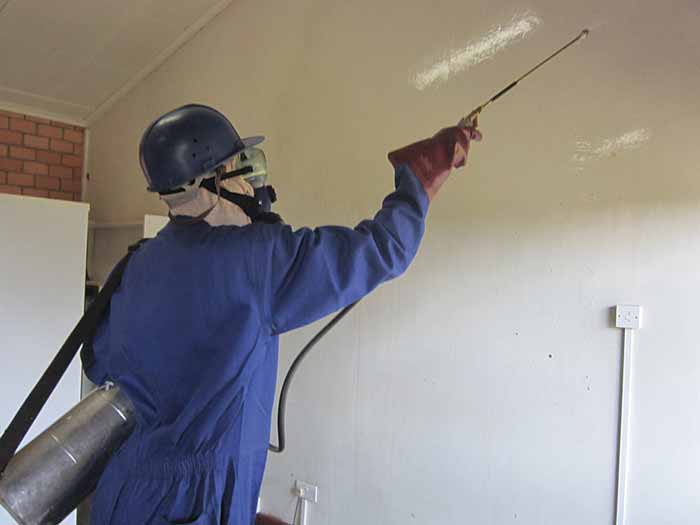Malaria is a parasitic disease caused by plasmodium parasites.Malaria is a parasitic disease that seriously endangers human health.There are four species of plasmodium that live in humans, Plasmodium vivax (Grassi and Feletti,1890 Labb'e,1899), P.Malariae(Laveran,1881 Grassi and Fetti,1890),P.Falciparum(Welch,1897)Schaudinn,1902 and P.Ovale(Graig,1900)Stephens,1922)。It infects hundreds of millions of people and kills more than a million each year.Malaria is most severe in Africa,But the disease also affects parts of Asia, Latin America, the Middle East and Europe.
The disease is transmitted by anopheles mosquitoes. Intermittent chills, fever, soreness, sweating, hepatosplenomegaly and anemia were the main clinical features; Falciparum often invades the gut and can suddenly show dangerous signs. In the case of cerebral malaria, untreated malaria can lead to death.Malaria occurs in both tropical and subtropical regions throughout the year. In temperate regions it occurs in summer and autumn.
The main symptoms
Patients with malaria often show symptoms of high fever. Because the early signs are similar to influenza, many foreign travelers unfamiliar with the disease are likely to mistake malaria for a cold. The disease is worsened by the lack of timely medical treatment.The life cycle of the plasmodium has a distinct circadian rhytem, this makes the patient's fever characteristic of recurrent symptoms. For example, the malaria fever cycle caused by Plasmodium falciparum is 48 hours. Other common symptoms of malaria include malarial anemia, acidosis, and respiratory distress etc. If the parasite invades the blood vessels of the brain, it causes the most severe form of cerebral malaria, which usually causes coma.According to the severity of the symptoms, malaria can be divided into uncomplicated malaria and complicated/severe malaria.Without timely and effective treatment, the death rate for malaria patients can be very high.
Classification of malaria
·Plasmodium falciparum
Urgent and Easy to relapse.The first time infected people often have prodromal symptoms, such as fatigue, burnout, yawning; Headache, aching limbs.Loss of appetite, abdominal discomfort or diarrhea;Irregular low heat.Generally lasts 2-3 days, the elderly one week.Then it turned into a typical episode. There are three phases, 1. Cold stage. Sudden fear of cold, first for the extremities of the end of the cool, feel the back, the whole body cold.Skin goosebumps, lips, nails cyanosis, pale face, muscle and joint pain throughout the body.Then the whole body shook, teeth chattering,For about 10 minutes, or even an hour, the chills will stop and the body temperature will rise. This period of patients often feel seriously ill. 2. Heating period. After the disappearance of cold feeling, the complexion turns red, cyanosis disappears, and the body temperature rises rapidly.People with high fever suffer terribly. Some restless, more than groan.Some delirium, confusion, or even convulsions or unconsciousness; Some have severe headaches. Persistent vomiting. The patient is red in the face. Shortness of breath; Conjunctival congestion; Skin hot and dry; Pulse flood and speed; The urine is short and dark. Talk more palpitations, drink, cold drink. Lasts 2-6 hours, up to 10 hours each. Herpes is common in the lip and nose after several episodes. 3.Sweating period. In the later stage of high fever, the face, hands and heart slightly sweat, then throughout the body, heavy sweat, wet clothes, about 2 ~ 3 hours of hypothermia, often to 35.5℃.Patients feel comfortable, but very sleepy, often sleep peacefully. When I wake up, my spirit is light, my appetite is restored, and I can work as usual.Now the interval came. whole process of the onset of about 6-12 hours, the typical intermittent 48 hours and repeat the process.General attack 5 ~ 10 times, because the body produces immunity and natural termination. In most cases, early fever is irregular, which may be caused by several batches of mature plasmodium in the blood. Some patients become synchronized after several episodes, as some of the malaria parasites are naturally eliminated. After several attacks, patients often have weak body, anemia, hepatosplenomegaly.
The more frequent the attack, the larger the spleen, the more anemia.
Because the difference of immunity or treatment is not thorough, some patients can become chronic.
·quartan ague
The attack is similar to vivax, but occurs once every three days, mostly in the morning,it lasts four to six hours. Splenic anemia is lighter, but recurrence rate is high, and often proteinuria, especially in children, can form malarial nephropathy.P. malariae is susceptible to mixed infection, and it is difficult for the disease to heal itself.
·P. ovale
Similar to P. malariae
·falciparum malaria
The onset of the disease is different, the clinical manifestations are variable,features: (1) after the onset of the disease, most of the only cold and no chills;High body temperature, hot irregular. Early rise to enter often show intermittence calorific, or irregular, late period continuance is high heat, as long as 20 many hours, just ended even once, next another attack again, cannot antipyretic completely;(3) antifebrile sweating is not obvious or not sweating;(4) large spleen, severe anemia;(5) can lead to a dangerous attack;Malaria parasites can be detected in the blood of the precursor stage;No recurrence.
·pernicious Malaria
Between 88.3 and 100% are caused by falciparum malaria,Occasionally, it occurs with p. vivax or p. malariae. Children under 5 years of age at the time of the outbreak;The incidence of non-immune outsiders can increase 20-fold;Even in local populations, treatment can be delayed. The number of protozoa in patients can be observed clinically as a monitoring item. If the thickness of tablets reaches 300 ~ 500 protozoa per field of vision, it may occur. If each field of vision is more than 600 is extremely easy to happen.Clinically, there are mainly the following types. 1.Brain type. It is common。Feature:①Usually occurs after two to five days of general onset of cold and fever; A few suddenly fainted and fell ill;②Severe headache, nausea and vomiting;(3) consciousness disorders, can be irritable, and then drowsiness, coma; Convulsions, half of the patients can occur, more children.(5) if the treatment is not timely, the development of cerebral edema, resulting in respiratory, circulatory or renal failure;⑥Physical examination of the spleen, 2/3 of the patients in a coma when the liver and spleen has been enlarged; Anemia, jaundice, skin bleeding points are visible; Neurological examination, meningeal stimulation signs positive, can appear pathological reflex.7. Laboratory examination: plasmodium can be detected on blood smear.Lumbar puncture cerebrospinal fluid pressure increased, the number of cells often below 50 / um, mainly lymphocytes;Biochemical examination is normal. 2.Gastrointestinal type. In addition to cold fever, there is nausea and vomiting, abdominal pain diarrhea, diarrhea water or blood, can be like dysentery with tenesmus.Some have acute abdominal pain only, and do not have diarrhoea, often be mistaken for acute abdomen.Severe diarrhea may lead to shock, kidney failure and death. 3. Hyperthermia type. When malaria strikes, body temperature rises rapidly to 42 degrees Celsius or more.The patient is irritable, delirious, convulsive, unconscious, and often dies after a few hours 4.Black urine fever is an acute hemolysis,and cause hemoglobin and hemolytic jaundice, severe cases of acute renal insufficiency.
The reason may be autoimmune response, but also may be related to G - 6 - P dehydrogenase deficiency.Clinical with sudden onset, chills, high fever, lumbago, soy sauce color urine, urination tingling pain, and severe anemia, jaundice, protein, tubular urine as the characteristics.The geographical distribution of the disease is consistent with that of falciparum malaria.
pathogenic
Malaria is caused by plasmodium(疟原虫属,Plasmodium spp.),This is a class of single-celled eukaryotes, which are intracellular parasites.They use anopheles mosquitoes (a member of the genus anopheles) as vectors, passing on the pathogen through the bite and blood of the female mosquito.Only four species of Plasmodium can infect humans, including Plasmodium falciparum, Plasmodium malariae, Plasmodium ovale and Plasmodium vivax.Among them, plasmodium falciparum is the main pathogen of endemic malaria in Africa, and also the plasmodium that causes the highest mortality rate.
treatment
1.Seizure control
Chloropuine phosphate、Amodiaquine dihydrochloridum、Piperaquine、Piperaquine phosphate、Quinine sulfate 。
The prevention methods
1. Use mosquito nets, mosquito repellent incense and other anti-mosquito measures; Insecticide-treated nets work better.
2. Spray Bendiocarb 80%WP on the walls or all corners of the room to kill the mosquitoes in the room.


